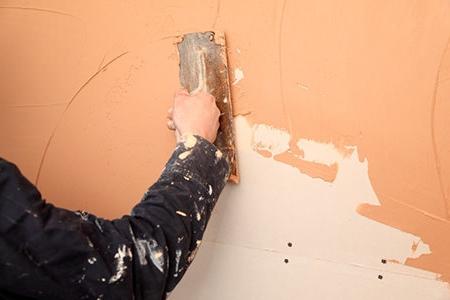In the decoration of rooms, the plastering of walls and ceilings is one of the final stages, with the goal of leveling the surface before painting or stickering the wallpaper. The process is quite time-consuming and requires certain skills, so ideally, of course, it is better to entrust it to specialists. However, if you are for reasons
they decided to learn how to save economies on their own - there is nothing unattainable in this desire, you only need to carefully and thoroughly relate to the process. You will be convinced that with each square meter you are getting better and you are more and more satisfied with yourself. So how to plaster a wall?
Any plaster mortar is a mixture of sand and a binder diluted with water to the desired consistency, which is used as cement, gypsum or lime. It is advisable to use cement plaster where humidity is high: for example, in a bathroom. In dry living quarters, gypsum or lime plaster is preferred, allowing the walls to "breathe" as much as possible. Consider the conditions of the room before deciding how to plaster the wall. The trading network has a wide selection of ready-made plaster mixes, however, you can prepare the mixture yourself. The proportions and consistency of the solution depend on which layer it is intended for.
In plastering, three layers are distinguished: spray, soil and nakryvka.
Spray - the bottom layer, designed to ensure reliable adhesion of the plaster with the wall material. The solution needs mobility, so by consistency it should be similar to thick sour cream. The soil should be made thicker: the solution should not “float” and crawl under its own weight. The same consistency is made and nakryvka.
Before plastering the wall, we prepare its surface: we thoroughly clean it of everything superfluous and install “beacons” -
wooden slats or special galvanized profiles, which can be purchased at the store. “Lighthouses”, the thickness corresponding to the thickness of the layer, are set strictly in level at such a distance from each other that the higher rule (the tool with which you will level the spray) overlaps two adjacent “lighthouses”. In places where there is a gap between the “beacon” and the wall, the gap must be filled with a solution, or wedges should be put.
Now you can proceed to the spray itself. We lightly wet the surface of the wall and in between the “beacons” with a trowel, a trowel or a special bucket, we quickly pour the solution, moving from top to bottom. The throwing force is needed so that “pancakes” are formed on the wall, and not bumps, obviously protruding beyond the “lighthouse”. We take the rule and, at an acute angle (40-45), firmly pressing it to the “beacons”, level the layer, removing excess solution. After the solution has set, remove the beacons, fill the voids with the solution and equalize. After this layer has dried up and stopped crumbling, we finally wipe it with a wooden grater and proceed to the primer.

The primer is applied in 2-3 layers, each 6-8 mm thick. We put the solution on the trowel along the entire width and from the bottom up we “distribute” it along the wall. Of course, each previous layer should be allowed to dry before applying the next. The final coat must be dampened before coating, just as before plastering the wall.
The coating is applied with a thickness of about 4 mm. After drying, grout is done with a wooden grater. Having pressed the grater to the wall, in a circular motion we move it over the entire surface. And the last - smoothing with a trowel with a rubberized work surface. We smooth down first vertically, then horizontally, and the wall is ready. After complete drying, you can paint or paste over.
Thermal insulation plaster differs from the usual one in the composition of the primer. Instead of sand, wood sawdust, pumice, slag or other similar (light and porous) materials are included in the solution as a filler. There are no features in working with such a solution, unless the mixing time is increased.